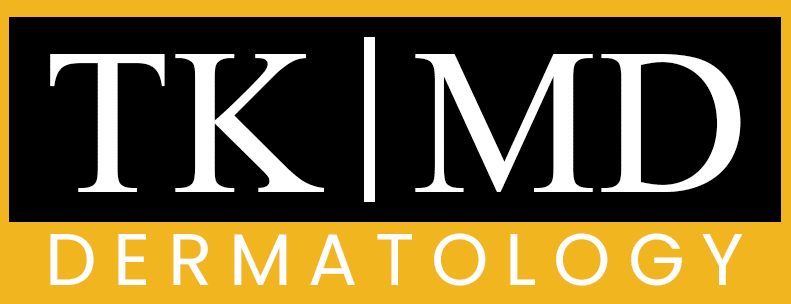A double chin, or submental fat, is a layer of fat that forms below the chin, often associated with weight gain, genetics, or aging. This common concern affects people of all ages, impacting facial appearance and self-confidence.
Neck fat and double chins can be challenging to address, but understanding their causes is the first step towards finding a solution. For some, cosmetic surgery may be a viable option to get rid of excess fat.
This comprehensive guide will explore multiple approaches to reduce neck fat, from natural exercises to medical interventions, helping you achieve a more defined jawline and chin profile.
Key Takeaways
- Understanding the causes of neck fat is crucial before exploring removal methods.
- A combination of lifestyle changes and targeted exercises can help reduce neck fat.
- Medical interventions, such as cosmetic surgery, may be necessary for some individuals.
- A comprehensive approach is necessary to achieve a more defined jawline and neck profile.
- Different methods work for different people, depending on their overall health and specific goals.
Understanding Neck Fat and Double Chin
The accumulation of fat in the neck area, often resulting in a double chin, is a widespread issue that can be caused by various factors. This condition not only affects one’s appearance but can also be indicative of underlying health issues.
Causes of Neck Fat
Neck fat accumulation is attributed to multiple causes, including weight gain, genetics, aging, and lifestyle factors. Weight gain is a primary cause, as excess calories are stored as fat throughout the body, including the neck region. Genetic factors also play a significant role in determining where fat is stored in the body.
Common Signs of Neck Fat
Common signs include a visible double chin, loss of jawline definition, and a fuller appearance in the neck area. These signs can make an individual appear older or heavier than they actually are.
Why People Develop Double Chins
A double chin can result from being overweight or obese, but it can also occur in thin individuals due to genetic factors or a lack of muscle density in the chin area. Aging is another factor, as it causes the skin to lose elasticity and sag.
| Cause | Description | Effect |
|---|---|---|
| Weight Gain | Excess calories stored as fat | Visible double chin |
| Genetics | Influences fat distribution | Double chin in thin individuals |
| Aging | Skin loses elasticity | Sagging skin, double chin appearance |
Understanding the specific cause of neck fat is crucial for determining the most effective removal strategy. By addressing the root cause, individuals can more effectively reduce the appearance of a double chin and improve their overall health.
How Weight and Genetics Influence Neck Fat
The appearance of neck fat is influenced by a combination of factors, including weight and genetics. Excess body weight is a significant contributor to increased neck fat, as surplus calories are stored as fat in various body locations, including the neck and chin area.
The Role of Obesity and Weight Gain
Even modest weight gain can result in noticeable changes to the neck’s appearance, particularly in individuals genetically predisposed to storing fat in this region. Maintaining a healthy weight is crucial in minimizing the risk of developing neck fat.
| Factor | Impact on Neck Fat |
|---|---|
| Obesity | Increased fat storage around the neck |
| Weight Gain | Noticeable changes in neck appearance |
| Genetics | Predisposition to fat storage in the neck area |
Genetic Factors That Contribute to Neck Fat
Genetic factors determine natural fat distribution patterns, explaining why neck fat can be present even in individuals with a normal BMI. Family history plays a significant role in neck fat development, with many people inheriting similar facial and neck structures from their parents.
“What’s known as ‘turkey neck’ is a problem with your neck’s skin, fat or underlying muscle, or a combination of the three,” says plastic surgeon Martin Newman, MD.
Aging and Its Effect on Neck Appearance
The aging process causes multiple changes that affect neck appearance, including loss of skin elasticity, weakening of neck muscles, and redistribution of fat. As we age, the platysma muscles in the neck can separate and weaken, creating vertical bands and contributing to the appearance of excess neck fat.
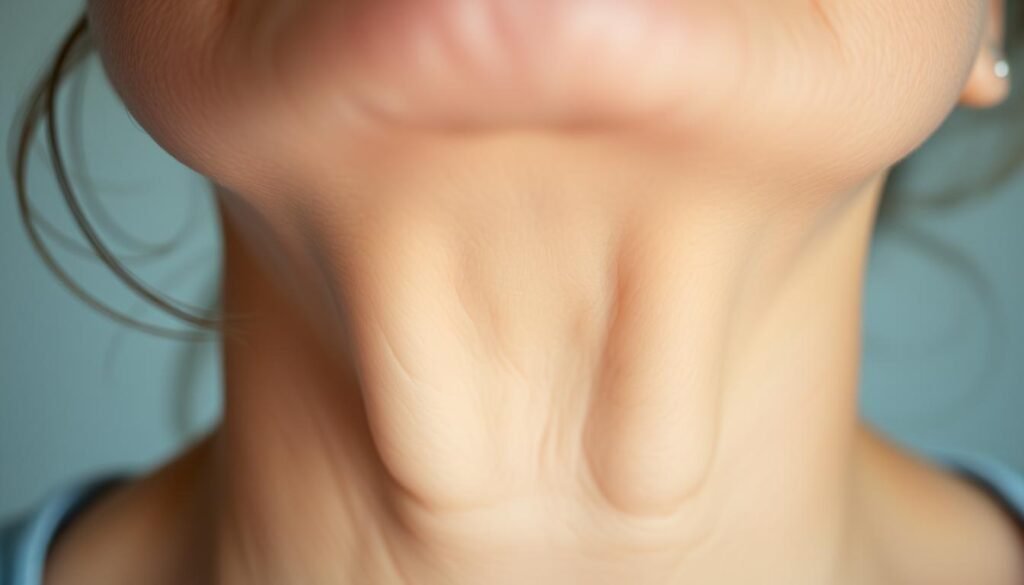
Hormonal changes throughout life can also influence fat distribution, often directing more fat to the face and neck area during certain life stages.
Effective Exercises to Remove Neck Fat
Exercises that strengthen and tone the muscles under the chin can potentially reduce the appearance of neck fat. While there’s no scientific evidence that chin exercises work to get rid of your double chin, there’s anecdotal evidence to support their effectiveness.
Chin and Jaw Strengthening Exercises
Certain exercises can help strengthen the muscles in the chin and jaw area. These exercises include:
- Straight Jaw Jut: Tilt your head back and look toward the ceiling. Push your lower jaw forward to feel a stretch under the chin. Hold for a count of 10. Relax your jaw and return your head to a neutral position.
- Ball Exercise: Place a 9- to 10-inch ball under the chin. Press your chin down against the ball to strengthen neck muscles through resistance training.
- Tongue Stretch: Looking straight ahead, stick your tongue out as far as you can. Lift your tongue upward and toward your nose. Hold for 10 seconds and release.
Neck Muscle Toning Techniques
In addition to chin and jaw exercises, there are techniques to tone the neck muscles. These include:
- Neck Stretch: Tilt your head back and look at the ceiling. Press your tongue against the roof of your mouth. Hold for 5 to 10 seconds and release.
- Bottom Jaw Jut: Tilt your head back and look at the ceiling. Turn your head to the right. Slide your bottom jaw forward. Hold for 5 to 10 seconds and release. Repeat with head turned to the left.

How Often to Perform These Exercises
For optimal results, these exercises should be performed consistently. Most experts recommend 10-20 repetitions of each exercise daily. While exercise results vary by individual, most people need to perform these exercises for several weeks before noticing visible improvements.
It’s also important to note that these exercises work best when combined with overall weight management strategies rather than as standalone treatments.
Diet and Lifestyle Changes to Reduce Neck Fat
Reducing neck fat requires a multifaceted approach that includes dietary adjustments and lifestyle modifications. By focusing on overall weight loss and adopting healthier habits, individuals can minimize the appearance of a double chin and achieve a slimmer neck.
Nutritional Guidelines for Fat Reduction
A healthy diet plays a crucial role in reducing neck fat. Nutritional guidelines for fat reduction include:
- Increasing protein intake to boost metabolism and satiety
- Reducing processed carbohydrates and focusing on whole, nutrient-dense foods
- Eating lean protein sources like poultry and fish
- Incorporating healthy fats such as olive oil, avocados, and nuts into your diet
Creating a caloric deficit through diet is essential for weight loss that affects the neck area. This typically requires a reduction of 500-750 calories daily.
Hydration and Its Importance
Proper hydration is vital for fat metabolism and can help reduce water retention that may contribute to a puffy appearance in the neck. Drinking adequate water, typically 2-3 liters daily, supports overall weight management and helps maintain skin elasticity in the neck region.
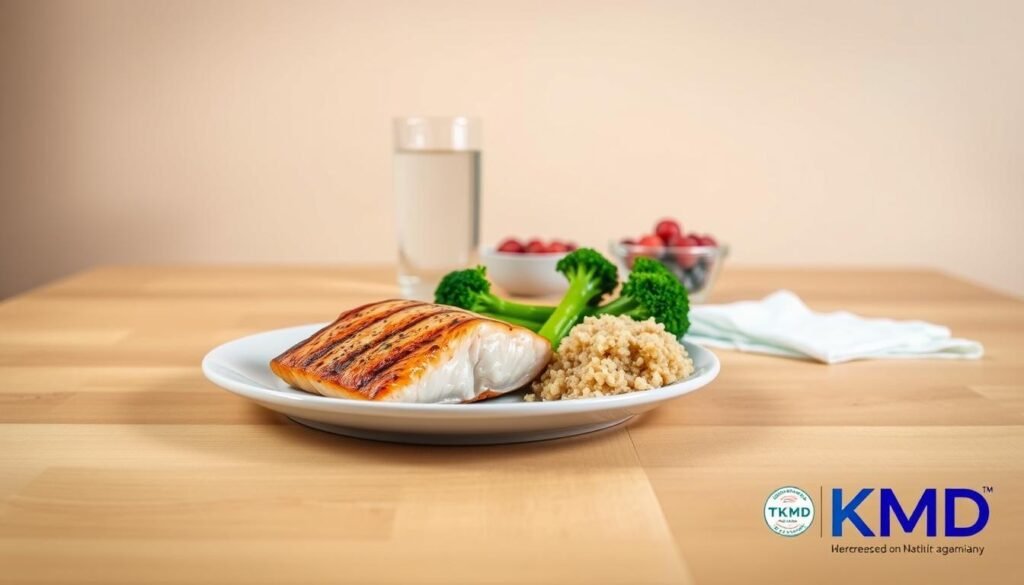
Overall Weight Management Strategies
Consistent weight management strategies, including regular physical activity combined with dietary changes, yield the most sustainable results for neck fat reduction. Additionally, limiting alcohol and sodium intake can significantly reduce fluid retention that often affects the face and neck area. Lifestyle changes like improving sleep quality and reducing stress can positively impact hormone levels that influence fat storage in the neck and face.
By adopting these diet and lifestyle changes, individuals can effectively reduce neck fat and achieve a more toned appearance.
Non-Surgical Treatments for Neck Fat
For those seeking to get rid of neck fat, non-surgical treatments present a promising alternative to surgical procedures. These treatments have gained popularity due to their minimal downtime and noticeable results.
Injectable Treatments
Injectable treatments, such as Kybella, have been approved for reducing the appearance of a double chin. Kybella contains deoxycholic acid, a molecule that helps the body absorb fats.
Kybella and How It Works
Kybella is administered through a series of injections, with treatments spaced 4-6 weeks apart. Most patients require 2-6 treatments for optimal results. Deoxycholic acid works by destroying fat cell membranes, leading to the natural elimination of released fat.
Botox for Neck Bands
Botox injections can effectively treat platysmal bands, which contribute to the appearance of neck aging and sagging.
Fat Freezing and Body Sculpting
Fat freezing technologies, like CoolSculpting, target and crystallize fat cells beneath the skin without damaging surrounding tissues. The frozen fat cells die and are naturally eliminated by the body over 1-3 months.
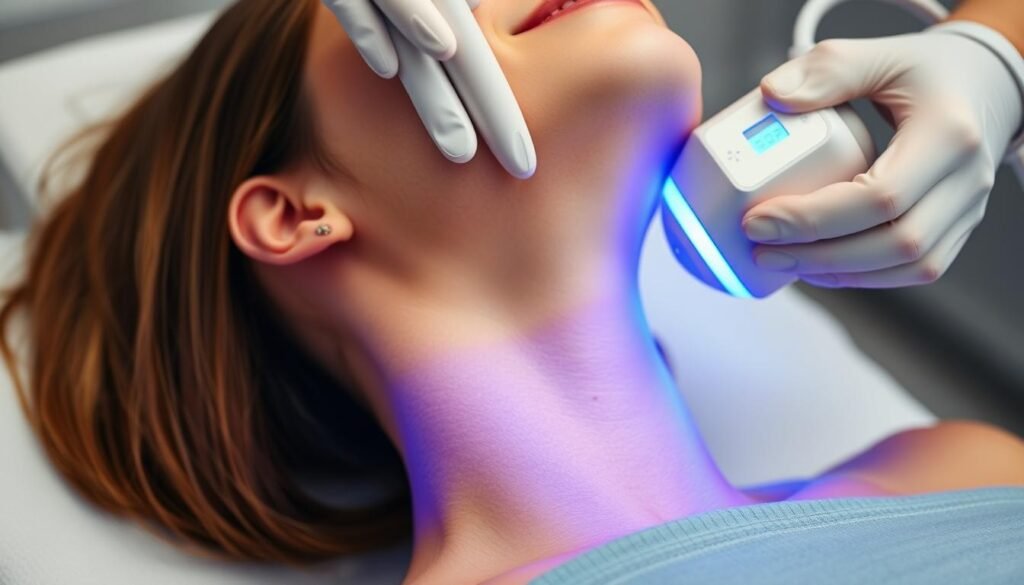
Radiofrequency and Ultrasound Treatments
Ultherapy is an ultrasound treatment that targets the foundational layers of skin tissue to lift and tighten the neck area without surgery. Radiofrequency treatments deliver controlled heat energy to stimulate collagen production and tighten loose skin.
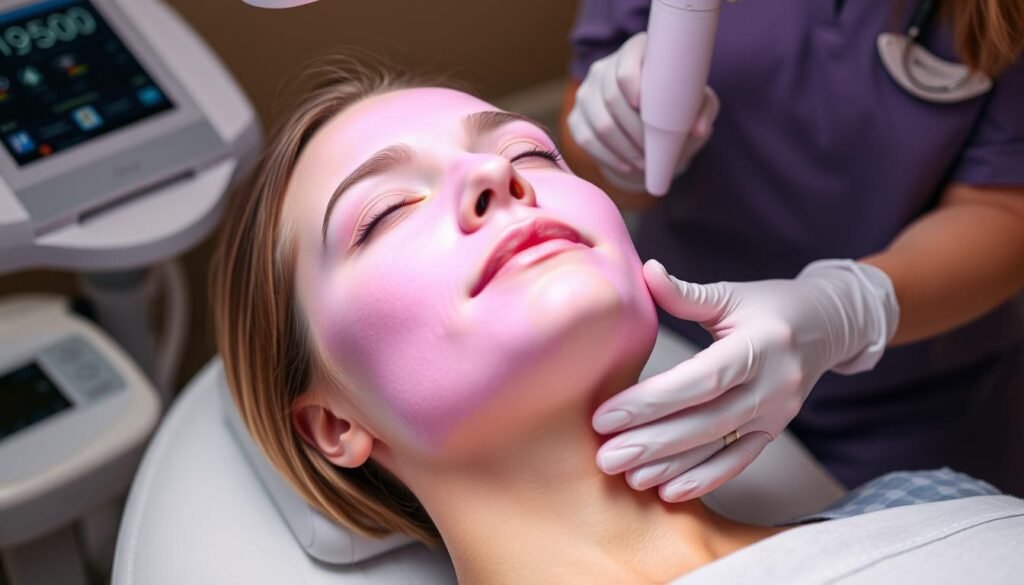
These non-surgical treatments offer a range of options for individuals looking to reduce neck fat. While results may vary and multiple sessions are often required, they provide a less invasive alternative to surgery.
Surgical Options to Remove Neck Fat
Surgical procedures offer a definitive way to remove excess neck fat and improve the overall appearance of the neck and chin area.
Liposuction Procedures
Liposuction is a common procedure for removing fat from beneath the skin. When performed on the neck, it involves sculpting and contouring the chin and neck to reshape the jawline. This procedure typically requires only local anesthesia.
Neck Lift Surgery
Neck lift surgery encompasses several procedures, including cervicoplasty and platysmaplasty. Neck lift surgery addresses both excess skin and fat, providing a more defined neck contour.
Cervicoplasty
Cervicoplasty is a surgical procedure that removes excess skin around the neck and chin, resulting in a more defined neck contour.
Platysmaplasty
Platysmaplasty involves tightening the platysma muscles in the neck, which can become separated with age, creating a “turkey neck” appearance.
Recovery and Results from Surgical Procedures
Recovery from surgical neck procedures typically requires 10-14 days, with bruising and swelling gradually subsiding. Final results continue to improve for up to 6 months as swelling resolves and tissues settle into their new position. While more invasive than non-surgical options, these surgery procedures provide longer-lasting results.
Conclusion: Choosing the Right Approach for Your Neck Fat
To effectively reduce neck fat, consider a combination of lifestyle changes, exercises, and potentially, medical treatments. Neck exercises, such as tilting your head back or making silly faces, can help tone the area over time.
For those with mild neck fat, a combination of diet, exercise, and targeted neck exercises may help improve appearance. Individuals with moderate neck fat might benefit from non-surgical treatments, while those with significant neck fat may require surgical options.
Ultimately, the best approach is one that aligns with your health goals, lifestyle, and comfort level with various treatment options. Consulting with qualified professionals is essential to determine the most appropriate treatment plan.
